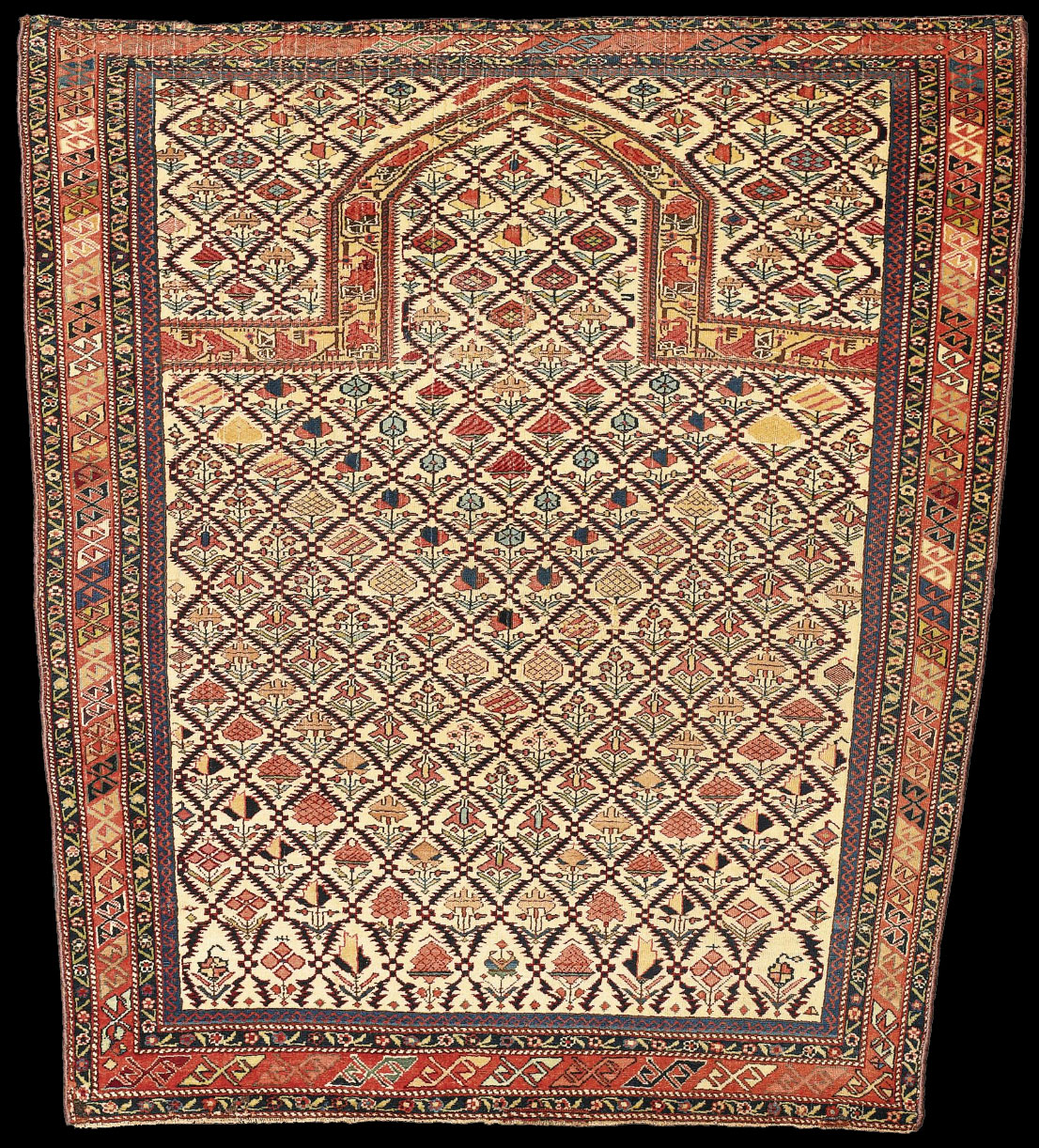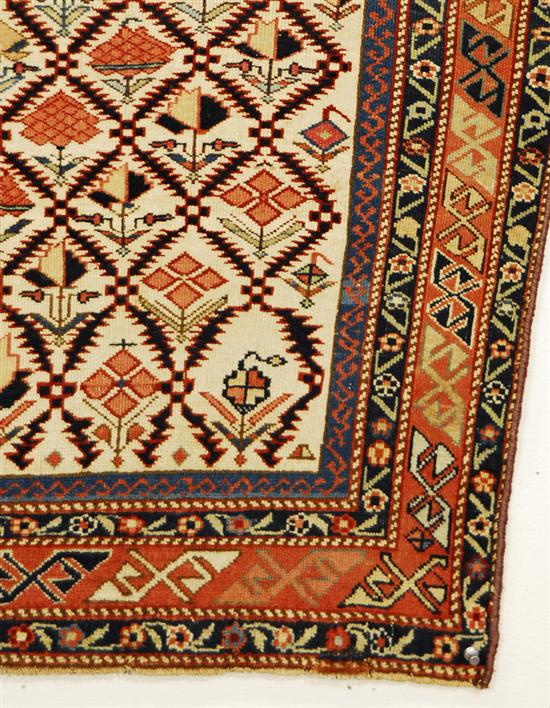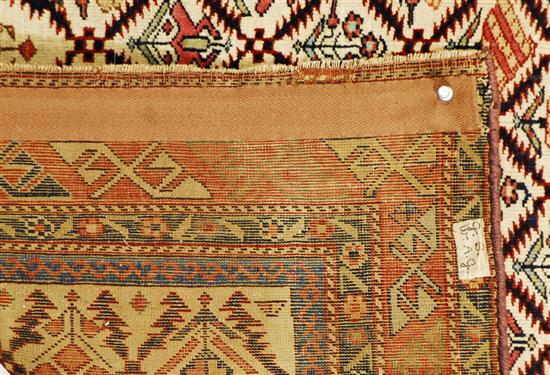|
Lot 46
A SHRIVAN MARASALI PRAYER RUG, EAST CAUCASUS
Estimate: 10,000 - 15,000 USD
LOT SOLD. 11,250 USD (Hammer Price with Buyer's Premium)
approximately 4ft. 3in. by 3ft. 11in. (1.29 by 1.19m.)
early 19th century
Carpets
Sothbey's New York | 16 December 2009 | N08597
CATALOGUE NOTE
This finely woven, silk foundation rug is one referred to by Ralph Kaffel as
belonging "...to a small, elite family of very
finely woven lattice pattern rugs, usually atttributed to Marasali. Rugs in
this group feature rows of flowers arranged in
sequence to form a 'V' pattern. The depiction of some of those flowers is
usually natrualistic, and red silk is often used
in the pile. Yellow is used in greater proportions than in similar
white-ground lattice pieces." See Ralph Kaffel,
Caucasian Prayer Rugs, London, 1998, pl. 94, p. 150. The other known related
examples are a piece dated 1230
(1814) formerly in the Yale University Art Gallery, now in the collection of
James D. Burns, see Sotheby's New York,
31 May 1986, lot 7 and James D. Burns, The Caucasus: Traditions in Weaving,
Seattle, 1987, pl. 7; a wool foundation
piece in Eberhart Herrmann, Seltene Orientteppiche IX, Munich, 1987, pl. 37;
and the rug formerly with Vojtech Blau,
sold Sotheby's New York, Carpets from the Estate of Vojtech Blau, 14
December 2006, lot 39.
Note: approximately 210 knots per square inch



|



